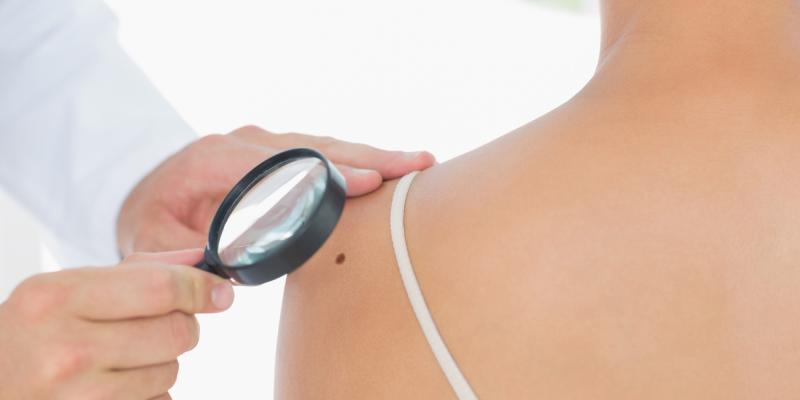
Sarah's Health Notes: Time To Check Your Moles
As the sun warms up and we cast off the winter layers, dermatologists say we should examine our skin carefully.
Okay so there were a lot of negatives about 2020 but one thing you couldn't grumble about was the long hot summer in the UK when the sun beamed down on us day after long day. And, with the knock on effect of lockdown, many of us spent more time than usual outdoors. But wonderful as that was for our mental health, it may also have put our skin at risk.
A survey commissioned by Cancer Research UK last summer makes scary reading. Over a third (35%) of UK adults say they generally don’t protect their skin in any way in strong sun in their own outside space. People are more assiduous about sun protection when they’re out somewhere but, as the charity says, the sun is just as strong whether you’re on your balcony or back garden as it is on the beach.
Dr Adam Friedmann consultant dermatologist for Stratum Dermatology Clinics advises that ‘It’s really important to get into the habit of doing a quick mole check in front of the mirror, where you take a look at all the skin and thoroughly search for anything new or different.’
Monitoring the skin for signs of skin cancer (melanoma) is crucial because if caught early enough, a melanoma is very easily treated and can be cured. Although older people are more at risk, melanoma is one of the commonest cancers in young people because UV rays are hazardous to the skin at every age, including children.
Moles, which are usually brown, are made up of clusters of pigment-producing cells called melanocytes. Usually they spread out and produce a tan but sometimes they clump together and create a mole.
The vast majority of moles are harmless but occasionally they can morph into a skin cancer. ‘Any mole, whether it’s new or pre-existing, that’s changing shape or continues to get bigger needs to be reviewed,’ says Dr Friedmann.
How to check moles at home:
Look for anything that’s markedly different, in size, shape, colour or a mole with a white ring around it. Do it now and, if you think you are at risk of skin cancer (eg fair skinned), repeat in six weeks and then again six weeks later.
The ABCDE check is a helpful guide:
- Asymmetry - Does the left side of the mole look like the right side, or does the top half look like the bottom half? Both halves should usually look the same.
- Border – Is the border well defined and sharp? Watch out for unclear and irregular or blurry borders.
- Colour - Is your mole all the same colour? Keep an eye out for any changes in colour, especially black or blue colours, multiple colours or pale areas.
- Diameter - Is your mole smaller than the end of a pencil? A melanoma is usually more than 6mm in diameter. However, anything growing should be reviewed, as melanomas can start small.
- Evolving - Monitor any changes in size, colour, crustiness, itching or bleeding of existing moles.
A single mole check at Stratum Dermatology Clinics costs £45, with top to toe checks available if required. Virtual consultation services are available. More information here.
Surprisingly perhaps, a mole with a rough warty surface usually isn’t potentially harmful; early melanomas are usually completely flat to the skin. Sarah’s back has a mass of these solar or actinic keratoses, which can be treated with laser or cryotherapy. A dermatologist told her years ago to blame her parents, as they are often linked to heredity although sun damage is definitely the main factor.
DISCLAIMER: The views, opinions and information expressed in this article and on Victoriahealth.com Ltd are those of the author(s) in an editorial context. Victoriahealth.com Ltd cannot be held responsible for any errors or for any consequences arising from the use of the information contained in this editorial or anywhere else on the site. Every effort is made by the editorial and content team to see that no inaccurate or misleading information, opinion or statement appear, nor replace or constitute endorsement from medical bodies or trials unless specified. Victoriahealth.com Ltd accept no liability for the consequences of any inaccurate or misleading data, information, opinion or statement. Information on Victoriahealth.com Ltd and in the editorials is provided for informational purposes only and is not intended as a substitute for the advice provided by your physician or other healthcare professional. You should not use the information on this website or in the editorials for diagnosing or treating a health concern or disease, or for the replacement of prescription medication or other treatment.